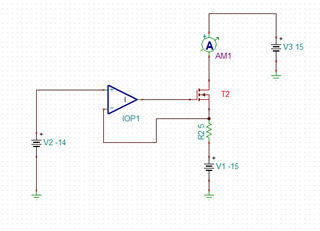Hi ,
I want to use XTR110 +/-200mA AO circuit, but it doesn't work.

It was designed as shown in the Datasheet Page 9.
I couldn't find IR9513, IR513, and IRFF9113, so I used RD3L01BATTL1 , FDD86381-F085, and RD3L140SPTL1 as substitutes.
Please check my circuit.



